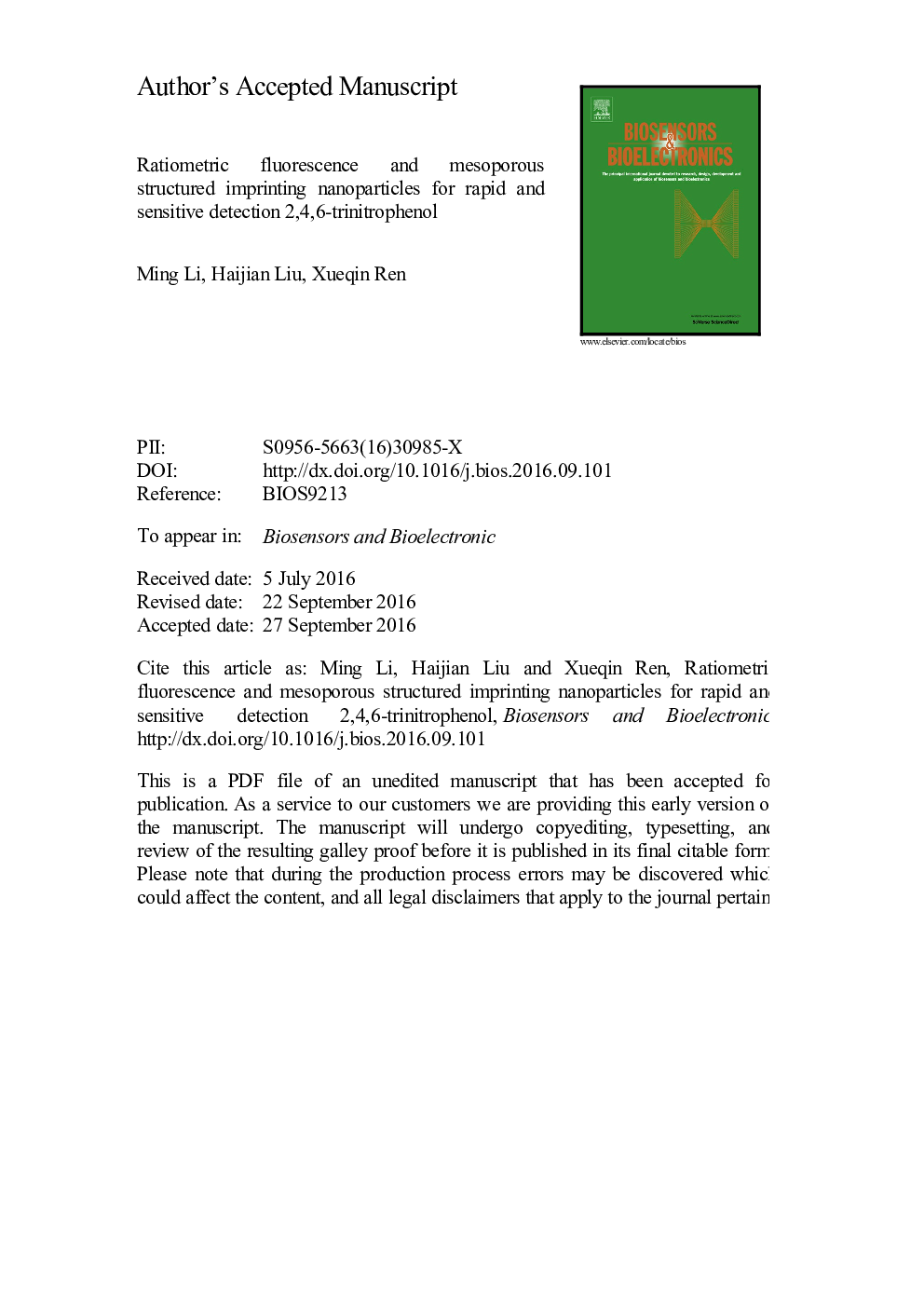| Article ID | Journal | Published Year | Pages | File Type |
|---|---|---|---|---|
| 5031454 | Biosensors and Bioelectronics | 2017 | 22 Pages |
Abstract
The present study reports the fabrication of mesoporous-structured ratiometric molecularly imprinted sensors using a combined surface-imprinted and ratiometric fluorescence method. The sensors were subsequently examined in the selective and sensitive determination of 2,4,6-trinitrophenol (TNP). In the preparation of the ratiometric system, the reference dye CdTe quantum dots were embedded in silica core particles via the Stöber method; the functional target sensitive dye AAMBT&SiO2, which was obtained via polymerization of 2-acrylamide-6-methoxybenzothiazole (AAMBT) with allyltriethoxysilane, was embedded in the mesoporous silica shell. In the surface imprinting process, cetyltrimethylammonium bromide was employed to create mesoporous-structured silica to promote quenching of AAMBT by TNP via resonance energy transfer, thereby enhancing the sensitivity of the sensor. Under optimum conditions, the ratiometric fluorescence molecularly imprinted polymer sensors achieved a detection limit of 43Â nM within 3Â min. The practical application of the developed sensor in real water samples was successfully demonstrated through analysis of TNP in water samples, achieving satisfactory recoveries of 92-104%. Thus, a convenient and practical method for preparing highly selective and sensitive ratiometric fluorescence sensors is presented herein, providing a prospective method for rapid trace pollutants analysis in complex water samples.
Related Topics
Physical Sciences and Engineering
Chemistry
Analytical Chemistry
Authors
Ming Li, Haijian Liu, Xueqin Ren,
